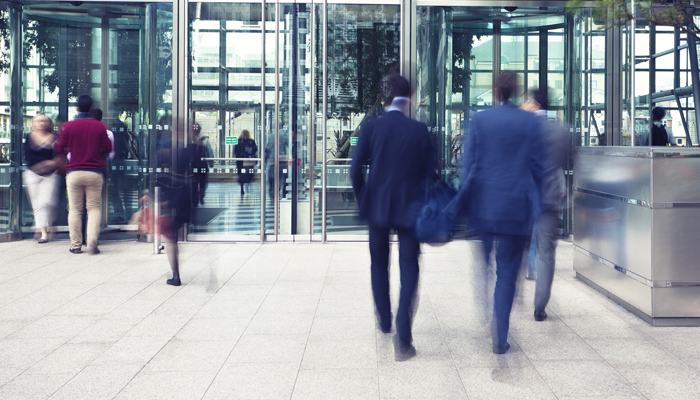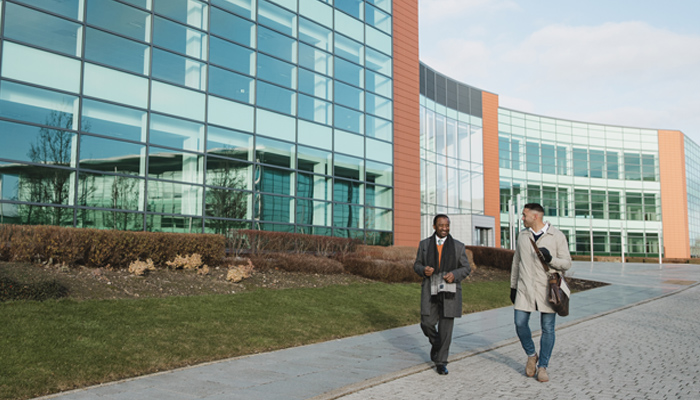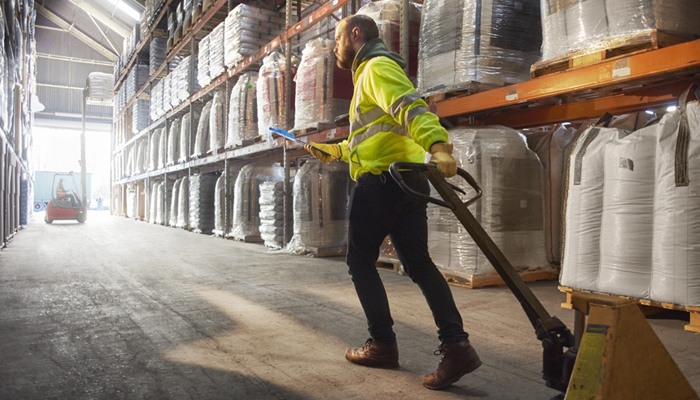Guide to Avoiding Underinsurance
One of the most important things to consider when taking out an insurance policy is just how much cover you actually need. If your cover isn’t adequate and you run into trouble, you could end up paying a lot more than you anticipated.
What is underinsurance?
Underinsurance is when the cover you have purchased is not enough to meet your business requirements in the event of a claim. Insuring assets for incorrect values or setting cover limits too low is likely to result in underinsurance.
What happens if I’m underinsured?
In the best-case scenario, nothing happens – your surgery runs smoothly with no issues and you never need to make a claim. However, even the best-run businesses can face unexpected problems such as a fire, burglary, or flooding. And it’s likely you may need to make a claim on your insurance at some point.
The worst-case scenario under the remedies within the Insurance Act 2015 may be that your insurers consider that the declared rebuilding sum insured represented a deliberate or reckless breach and would be within their rights to void the policy altogether, with no return of premium. Basically, you would have no insurance and no ability to make a claim with no refund.
If you are underinsured, it means that your assets are valued and insured at less than their current rebuilding/reinstatement cost (at today’s prices) in the case of buildings or current replacement value as for new contents, leaving your surgery with inadequate protection. Therefore, in the event of a claim, you would receive a reduced insurance payout that could have a negative impact on your surgery.
This scenario could easily happen to a surgery – 73% of our customers have indicators that show underinsurance*. Underinsuring your surgery would lead to a reduced payout in the event of a claim which in turn could have devastating consequences on your surgery.
It isn’t just buildings being underinsured that can reduce the payout in the event of a claim, your reported turnover matters too. If the turnover is not correctly reported, then the accurate amount will not be paid out in a business interruption claim. This could leave you out of pocket and affect your ability to get back to normal quickly.
How does underinsurance happen?
There are several ways underinsurance can happen to policyholders.
Referring to some online calculators or simply making your best guess at a building’s valuation means that you may be insuring the property for less than its actual worth. Using an online calculator is not necessarily a bad thing if you are using a tool such as the ABI Public Rebuild Calculator.
The Association of British Insurers (ABI) has commissioned BCIS to provide general guidance to help you check the adequacy of your sum insured. The Building Cost Information Service (BCIS) of the Royal Institution of Chartered Surveyors (RICS) produces a range of detailed guidance on the cost of rebuilding houses and flats.
ABI Public Rebuild Calculator.
Many customers are unaware of how the insurance principle of ‘average’ works and how it affects the value of a future claim. Any shortfall in a buildings sum insured will be reflected in a proportionate shortfall in a claims settlement in the event of an insurable loss. For example, if the building should be covered for £1,000,000 but is only insured for £500,000, then the amount payable will be reduced by 50% because the building is underinsured by 50%.
Most policies have an index-linking clause which helps policyholders keep up with inflation, by automatically increasing your sum insured annually in line with various indices. This should ensure that your sums insured are maintained at a level where 'average' should not apply. The average clause is typically found in commercial property insurance clauses.
This pre-supposes however that the base values are correct in the first place. The consequence of under insured values would be compounded if the sum insured is set too low at the outset. Also, your rebuilding costs should be reviewed annually to take into account improvements or extensions made to the property.
It is a misconception that the sum insured is the same as market value - there is no correlation between the two. Neither should it simply be based on new build developers' costs.
Your building sum insured should also allow for the costs of demolition, debris removal, site clearance as well as the architects', surveyors' and other professionals' fees. Also don't forget to factor in costs for gates, fences or car parking areas into your calculations.
What factors affect rebuilding cost and can cause underinsurance?
It is very difficult to accurately calculate the rebuilding costs of a property as a variety of factors need to be considered:
- Size
- Location
- Type of property - unusual or specialist design?
- Construction and materials
- Age and if it is ‘listed’
- Your VAT status
What else should be considered when arranging buildings insurance?
- Loss of rent
- Alternative accommodation
- Business interruption
- Increased and additional costs of working
Property owners: If you are letting your property then you need to protect your potential loss of rent resulting from a significant loss or damage. Importantly you should consider the maximum period likely to rebuild the property. This could be anything from 12, 18, 24, 36 months or longer. Ask your adviser for guidance.
Businesses (manufacturers, wholesalers, warehouses, etc.): Similarly to the above guidance, you should consider the potential interruption caused to your business impacted by the length of the rebuilding period and subsequent recovery of your trading to the same levels as applied prior to the damage occurring. In the worst case scenario you may be unable to trade until the property is rebuilt.
During this period you may suffer a total or severe reduction in income and also may have lost customers. How will you pay your bills and continuing overheads? How long will it take you for your business to recover? You should discuss this recovery time with us, in order to determine the correct indemnity period suitable for you.
This is important as claims payments will cease once the indemnity period has been reached.
Care home underinsurance case study
In January 2018, a residential case home for the elderly suffered a fire caused by a short in the fuse box. Thankfully there were no injuries, but the fire caused substantial damage to the premises.
67% underinsured
The policyholder had chosen to insure the property for £600,000 despite having a letter from the bank in 2017, stating he should insure the property for £1.8 million re-instatement costs, meaning the property was underinsured by 67%.
Settlement of claim
The claim was eventually settled with a payment of £140,879.89 being made for the reinstatement of the building.
Why so low?
Insurers apply average to claims where the policyholder doesn’t ensure the sums insured are sufficient. In this case, the damage caused by the fire, resulted in a loss of £446,000. In this example, the care home was underinsured by 67%, therefore the amount paid out for the loss was reduced by 67%.
Due to the deficit, the business owner was unable to reinstate the premises due to the significant shortfall in the actual rebuild costs of 96%. As a result, a 27-bed care home closed, and 39 employees were made redundant.
How can I avoid underinsurance?
Here are our tips on making sure you avoid underinsurance when taking out a policy:
- Get an expert valuation.
- Don’t use general market prices.
- Take care when using online calculators to get the value of your property – some of these may be inaccurate and may not include unique features or existing property damage which could impact the valuation.
- Check the VAT status. Some aspects of a building’s reinstatement might attract VAT while others might not, and the position can vary depending on each organisation’s tax arrangements- consider commercial/residential, new or refurbishment.
- Average clause. Understand how the “condition of average” clause applies typically included in property insurance policy wordings.
- Contents valuation. Don’t forget that contents should be insured for their new replacement value and the value should be sufficient to cover all of your contents. You must not omit items and insure everything: while small items may seem insignificant when considering values, it is important to accurately value and include them when making a decision. These can add up quickly, and it’s worth keeping an up-to-date inventory of all the items you wish to insure to make your valuation go as smoothly as possible. We suggest you make a list room by room.
- Stock insurance. When you hold stock this should be insured for the cost of replacement to you, not the price you sell at. many businesses are seasonal. A school clothing shop will peak in the summer months whilst many shops require seasonal increases over the Christmas or Easter periods. You must take account of the maximum stock levels in your property at any one time, and not the value that may be present when arranging your insurance cover.
- Review values at risk regularly. We recommend that buildings are professionally re-valued for rebuilding costs at least every three years. Property values fluctuate and so it may happen that the insurance you took out five years ago may now not be sufficient cover.
- Business changes. You should also consider adjusting your policy when you make changes to the business. If you get new machinery or technology in the building, that can have a significant effect on the level of cover you will require. Discuss the changes with your insurer before you go ahead with them so you aren’t caught by surprise later.
An estimated 43% of business interruption insurance policies are thought to be underinsured by more than 50% (according to a Chartered Institute of Loss Adjusters report**), so it is crucial to make sure you are covered for all eventualities.
Read more about how Towergate can help you avoid underinsurance.
Ensure your business interruption insurance is adequate
Your business interruption insurance not only needs to cover your ongoing costs and net profit (even though you may not be trading due to the insured damage), but also take into account the forecasting of how your profits and revenue are planned to rise during the period you are unable to trade and while your business is recovering, so your sum insured is adequate to cover future plans and growth as well.
In selecting your indemnity period, this must be of sufficient time to enable your turnover to recover to at least the same level as you were at the time the incident occurred. It is crucial to make sure you are covered for all eventualities. Towergate customers gain complimentary access to a business interruption calculator, which helps you reduce the risk of underinsurance by calculating a more accurate sum insured.
It is also important to remember how long you will need the cover for, given all these factors. Think every year about how your business has changed and what will it cost to rebuild.
Ensuring your property is not underinsured
Underinsurance risks often relate to replacement of property, where the costs relate not only to the rebuilding of the property itself but also the consequential business interruption while the building is being replaced. Remember to think about:
- Costs for planning, permissions, site clearance, digging, construction, fit out – every step.
- The fact you will have to pay for alternative premises in the meantime.
- How long it will take for your turnover to recover once you have reopened.
- Lease, rent, rates and facilities outgoings still in your name.
- Insuring the property for the build costs, not the market value.
- Any extensions, changes or extra buildings which could affect your sums insured.
- If you have rented a property, any tenants’ improvements you have made for which you are responsible.
Is it time to revaluate your sums insured?
With the increasing cost of labour and materials globally, it is vital that organisations including social care providers ensure that their buildings are correctly insured.
Whilst most insurers will apply index linking (which uplifts sums insured by a percentage figure) at each renewal in an attempt to ensure that sums insured remain adequate, this is not always sufficient. In any case it is the policyholder’s responsibility to ensure that the property is correctly covered.
Towergate recommend that an onsite rebuild valuation is undertaken by a chartered surveyor every three years. Whilst this might seem excessive, the uncertain situation with the war in Ukraine and stretched supply chains not yet recovering post pandemic, means a lot can change in that time.
It should be noted that the majority of UK commercial property insurance policies include an Average clause. This is included by insurers and underwriters to prevent policyholders deliberately underinsuring. The result of the Average clause is where significant underinsurance is found following a loss, the claims settlement figure will be reduced by the percentage of underinsurance.
Here we share some examples of why underinsurance is so important and how it can significantly impact a business financially.
Example one – Partial Loss
A portable CD player had an electrical fault which caused £25,000 of fire and resultant smoke damage. The care home operator only had £10,000 of contents cover and the insurer’s Loss Adjuster calculated the actual contents to be £100,000. The claims settlement was reduced by the percentage of underinsurance resulting in the policyholder receiving only £2,500, just 10% of the damage.
Example two – Total Loss
A fire at a care home with a buildings sum insured of £1,000,000 resulted in the home being burnt to the ground. The buildings sum insured was calculated as being £2,000,000, meaning the building was 50% underinsured. The policy holder therefore received a 50% reduction of just £500,000, leaving them to fund the remaining £1,500,000 of rebuild works from their own pocket.
As these examples show, a combination of inadequate sums insured and how the Average clause can have catastrophic consequences. It is therefore vital to ensure that sums insured are correctly calculated. If you have not already spoken to your broker about this issue, Towergate recommend that you get in touch to discuss the solutions open to you as soon as you can.
For more information or to get a quote, please call 0330 123 5342 or email our team at newcare@towergate.co.uk. To submit an enquiry form and get a call back, you can also visit our care and medical webpages.
Top ten indicators you could be underinsured
- Your building is listed, made of stone or other nonconventional material, or was constructed prior to 1920.
- Your building has not had a professional valuation within the last three years.
- Your care home has recently been altered or extended or is in an unusual location, perhaps with restricted access.
- Your property is finished to a significantly higher standard than normal or has 'eco-friendly' features.
- The value of your property is based on developer's costs, which are often much lower than one-off rebuilding costs due to economies of scale at the time of build.
- You only cover an indemnity period of 12 months on your business interruption cover.
- You haven't factored in costs for outbuildings, car parks, driveways, gates, fences, boundary walls, paving or lighting.
- You are carrying more stock (even if temporary/seasonal) than you were when you took out your policy or have purchased additional equipment, tools or machinery and have not advised your broker/insurer. This could also affect your business interruption cover depending on how long these would take to replace.
- You haven't factored in costs such as professional fees, site clearance or access – particularly where your business might need a crane or heavy plant to help with remedial work as a result of a claim. This could also add time which needs to be factored into your business interruption cover.
- You are now VAT registered.
How does Covid impact on underinsurance?
Recent surveys have indicated that the average degree of buildings underinsurance remains high amongst businesses. It is estimated to be approximately 45%***, which can result in significant financial penalties being applied to the settlement of an insurance claim. Some 25%* of small to medium sized business owners recently surveyed, identified that an unexpected bill of £50,000 would result in the closure of their business.
Covid affecting rebuild costs: buildings underinsurance is high
Costs of key building materials such as timber, steel and even cement have risen dramatically during the lockdown period with increases of 80%, 18% and 30%*** respectively. These large increases are due to shortages in production and demand outstripping supply.
Labour costs and the availability of skilled labour have also been impacted, not to mention the increased costs due to the need to comply with new H&S requirements.
Care and business insurance from Towergate
Make sure you speak to us to carefully assess your needs so you can avoid underinsurance. Visit our small business hub, call 0344 892 1664 or email us at sm-newbusiness.enquiries@towergate.co.uk for SME, tradesman or small business insurance, or our care and medical insurance hub, 01438 739 734 or medical@towergate.co.uk to learn more about our care insurance products.
If you want to speak to one of our specialist advisers about underinsurance, please call us on 01438 739 734 or email us at medical@towergate.co.uk.
About the author

Carolyn Baker-Mellor is a respected industry leader with over 35 years' experience within the care insurance sector. She works across a wide spectrum of insurance product and policy development, delivery and optimisation for care industry clients, including managing global corporate accounts, working closely with trade associations, and helping clients in protecting their businesses and personal assets.
Date: November 29, 2018
Category: Care and Medical













